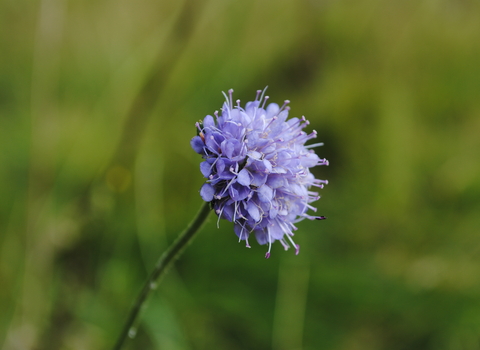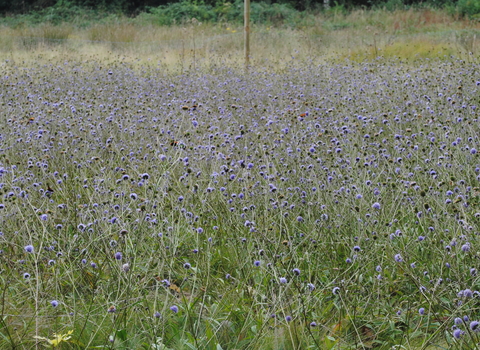
©Amy Lewis

©Amy Lewis
Devil's-bit scabious
The pincushion-like, lilac-blue flower heads of Devil's-bit scabious attract a wide variety of butterflies and bees. Look for this pretty plant in damp meadows and marshes, and on riverbanks.
Scientific name
Succisa pratensisWhen to see
July to OctoberSpecies information
Statistics
Height: up to 75cmCommon.
About
The rounded and nodding, purple-blue flower heads of Devil's-bit scabious can be found in damp meadows and marshes, and along woodland rides and riverbanks. It is in bloom between July and October, its pincushion-like flower heads attracting a wide variety of bees and insects. It is also the foodplant for the declining Marsh fritillary butterfly, which is classified as a priority species under the UK Post-2010 Biodiversity Framework.How to identify
Devil's-bit scabious has flattened, rounded flower heads that range in colour from blue to pinky-purple. Its leaves are long and oval, and differ from those of field scabious, which are dark green, hairy and deeply lobed.Distribution
Widespread.In our area
By volunteering for Cumbria Wildlife Trust you can help with our habitat conservation work. And you'll make new friends and learn new skills along the way.
Did you know?
Devil's-bit scabious gets its Latin name - 'Scabere', meaning to scratch - from its traditional use as a treatment for skin conditions, such as scabies and the sores of bubonic plague. Its common name arises from the fact that its roots look truncated, as if bitten off, legend has it, by the Devil.By volunteering for Cumbria Wildlife Trust you can help with our habitat conservation work. And you'll make new friends and learn new skills along the way.
